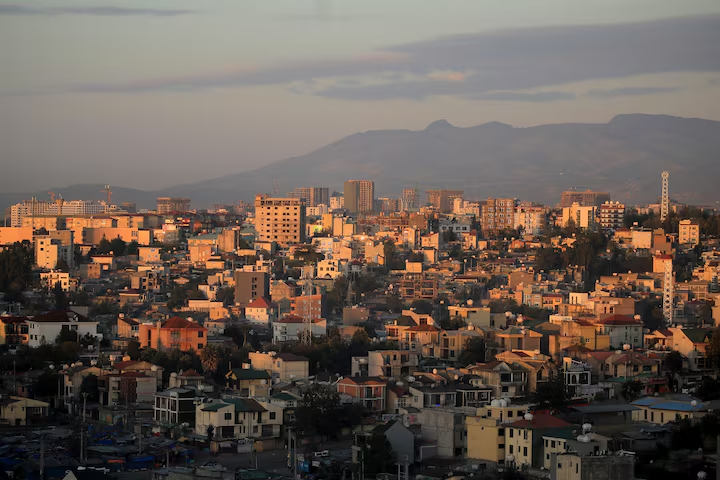
LONDON, April 4 (Reuters) – Ethiopia’s official creditors expect to finalise within months a draft debt restructuring that gives the government more time to pay but stops short of an outright haircut, the co-chair of the group told Reuters.
The East African nation, which defaulted in December 2023, announced a preliminary agreement with its Official Creditor Committee (OCC) in March to restructure $8.4 billion in debt – a key step for it to emerge from sovereign default.
Under the deal, Ethiopia will get around $2.5 billion in debt service relief over the course of its International Monetary Fund programme, which runs out in 2028.
“We reduce the stock of debt through an extension of maturities and also reducing specifically the payments during the IMF programme period,” said William Roos, co-chair of Ethiopia’s OCC.
Ethiopia, which is restructuring under the G20 Common Framework scheme that is meant to speed up poor countries’ debt treatments, is in a standoff with holders of its sole $1 billion Eurobond. They say Ethiopia does not need debt “haircuts” but instead faces a liquidity, or short-term cash flow, issue.
Bondholders have firmly rejected the country’s proposed 18% haircut.
Under its current IMF programme, Ethiopia must reduce its debt service by $3.5 billion until 2028 in order to make its debt “sustainable”.
In February, bondholders said the IMF’s assessment contained flaws that “artificially” created a solvency issue, partially by undervaluing gold and coffee exports.
REDUCING DEBT STOCK
Roos, who also co-chairs the Paris Club of wealthy creditor nations, said that while the OCC is monitoring Ethiopia’s exports, the IMF’s assessment was valid.
“We should work with the scenario we have on the table and which is the basis of the current IMF programme,” Roos said. “The situation of Ethiopia is not only an issue about liquidity, there is also a need to reduce the stock of debt.”
Bondholders have also said there is a lack of transparency around the official creditor deal, but Roos said they have had direct talks with bondholders and were open to meeting them in the future.
The OCC agreement does not include any contingencies that would raise or lower payments in line with shifting economic conditions, Roos said, adding that official creditors had focused on reducing debt service over the IMF programme period.
Still, he said Ethiopia was better able to pay compared with Zambia or Ghana, which concluded their own Common Framework debt restructurings last year.
“There is a capacity to pay from Ethiopia during the (IMF) programme period which is on average larger than what was possible for Zambia and for Ghana,” said Roos.
Roos said work between the OCC co-chairs, France and China, had been productive.
“All the work with China has been very constructive and now we are used to working together… We have been able to find a consensus first between us and then to negotiate with Ethiopia.”
Three other official creditors – the United Arab Emirates, Kuwait and Poland – have chosen to renegotiate Ethiopia’s debt separately, Roos said.
(Reporting by Karin Strohecker and Libby George in London; Editing by Gareth Jones)

